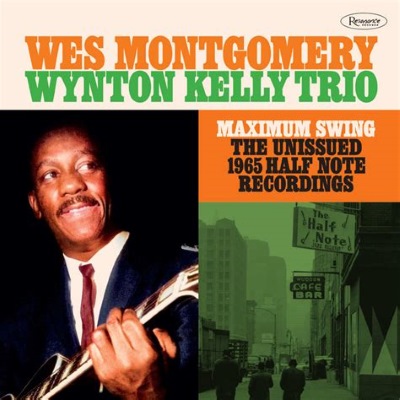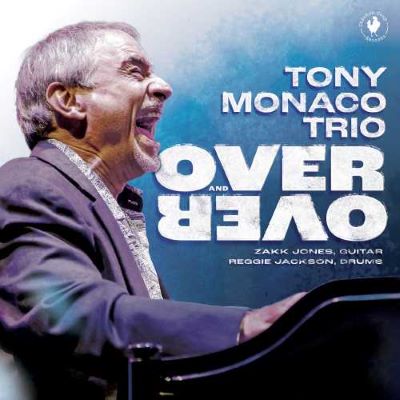For more than 50 years, the fervent B-3 organ jazz musician, Tony Monaco, has remained unwaveringly dedicated to the instrument’s soulful tradition.
In 1975, none other than NEA Jazz Master Jimmy Smith called the 16-year-old Monaco to provide encouragement. In 1979, Smith invited Monaco to perform at his supper club on Victory Boulevard in North Hollywood, California.
The ascent of Monaco’s jazz organ career had begun.
It grew throughout the intervening years, as did his hometown of Columbus, Ohio.
Monaco’s first regular gig took place at Monaco’s Palace, his father’s restaurant on Cleveland Avenue in Columbus.
For 10 years.
Always pulled back magnetically to the jazz organ despite other types of work, Monaco eventually developed a musical career that included 13 jazz albums. his own record label, jazz education initiatives, and tours with jazz icon Pat Martino, among others.
Meanwhile, Columbus grew to become nation’s fourteen largest city as its population doubled from the seventies to this decade. Its population within its city limits now exceeds Detroit’s, Denver’s, or Tampa’s.
Monaco built upon Columbus’s tradition of jazz organists like Don Patterson or Hank Marr, not to mention being the hometown of Harry “Sweets” Edison, Nancy Wilson, Aaron Diehl, and Rahsaan Roland Kirk, among others.
Monaco had written in an email, “My father used to tell me about ‘the Columbus Sound’ at the 502, the Carolyn Club, and the Thunderbird!” He continued, “When I started digging into the scene in the mid 70’s, there were the Needles Eye, Macon, Good Times, Stardust, My Brothers Place, Second Scene, and, of course, the Anchor Inn [where Marr regularly performed]. That’s were I lived and got the ‘Columbus Sound.’”
After accepting an invitation to an Italian dinner prepared by the Monaco family’s cooking professionals, Joey DeFrancesco, who had been touring in Columbus, encouraged Monaco to record. In 2001, DeFrancesco co-produced Monaco’s first Summit Records album, Burnin’ Grooves, on which DeFrancesco played as well.
Monaco dedicated Burnin’ Grooves to his father, Baldino Monaco, by writing, “He recognized my God-given talents and helped support me to become what I am today. I wish he were here to see my first national release! Thanks, Dad. So long for now.”
Monaco started his own subsidiary of Summit Records, Chicken Coup Records.
His vision is twofold:
(1) to produce Chicken Coup albums featuring either unrecognized or under-recognized jazz talent like guitarists Kevin Hildebrand and Don Hales, saxophonists Pete Mills and Nancy Wright, flutist Chip Shelton, drummer Scott Neumann, and blues singer Willie Pooch (Elvis Presley’s Mississippi childhood neighbor who sang in blues bands before settling down to work in a Columbus foundry for 30 years).
Or (2), to record emerging-talent and established jazz organists like Matthew Kaminski, Linda Dactyl, John Mackay, Kevin Coelho, and Bobby Floyd (who, along with Mills, performs with The Columbus Jazz Orchestra, led by renowned trumpeter Byron Stripling).
By leveraging his reputation and influence, Monaco shared his excitement for the instrument by bringing to Columbus some of its jazz masters—including Dr. Lonnie Smith, Jimmy McGriff, and Gene Ludwig. In addition, California-based jazz organ expert Pete Fallico, who hosted “The Doodlin’ Lounge” on KUSP-FM, accepted Monaco’s invitations to speak at the shows in the city’s King Arts Center.
Regarding Monaco’s 2004 concert with Dr. Lonnie Smith, Fallico wrote, “Tony and Lonnie both played this digitized model of the New B-3 from Hammond-Suzuki.”
The New B-3 was introduced in 2002 after Suzuki bought the naming and production rights after Hammond Organ Company ceased production in 1985. Monaco and DeFrancesco played the New B-3 when they recorded together again on Summit’s A New Generation: Paesanos on the New B3.
With his typical irrepressible enthusiasm, Monaco, an early adopter of the New B-3, wrote, “I think that Dr. Lonnie has a distinct approach and I totally dig it!!!!! At the sound check, we both quickly decided that this was a love fest and not a battle. It was amazing how evenly matched in playing we were.”
Monaco’s powerful on-stage presence invigorates his audiences, who invariably share his joy that he transmits through the B-3.
Frank Scott’s photo of Monaco on the cover of his most recent album, Over and Over, captured a typical moment during a Monaco performance. Taken in 2022, Scott’s photo shows a moment of Monaco’s transcendent immersion during his performance at the South Jersey Jazz Society’s Celebration of the Life and Legacy of Pat Martino in Somers Point.
Fallico wrote the liner notes for Over and Over, as—with his keen appreciation of new B-3 talent—he did for Monaco’s first album.
Soulfulness happens over and over again on Monaco’s new album. You can hear it when it’s played. You can see it on its cover.
Monaco’s Over and Over trio includes guitarist Zakk Jones—an assistant professor of music and the head of jazz studies at Capital University in Columbus—and drummer Reggie Jackson. Jackson’s extensive resumé lists work with singer Diane Schuur for 11 years, backing up Dr. John as a member of his band, and working with jazz masters such as Frank Foster, Benny Golson, Arturo Sandoval, Eddie Daniels, and Terence Blanchard.
Comprising not just a trio, these musicians share a musical bond that comes across as a single unit throughout Over and Over as they trade ideas or establish irrepressible grooves.
In several ways, Monaco’s Over and Over album consists of tributes to some of the people who influenced his music, primarily Jimmy Smith and Pat Martino.
The burner “Ready Set Go,” a fast-paced twelve-bar blues, expands upon Smith’s innovations. Yet, Monaco plays his composition as a reflection of his own exuberant personality. His first consecutive 12 choruses, never repetitive and based upon his introductory chord changes, are reminders of his mastery of the B-3. Each chorus offers separate musical ideas enabled by the unique characteristics of the instrument. For instance, at 2:27, Monaco’s twelfth chorus borrows the classic B-3 technique of playing one sustained treble note while improvising with his left hand. The fluidity of Monaco’s technique may go unnoticed as the final phrase of chorus four connects seamlessly to the first phrase of chorus five.
“Uprooted” is Monaco’s adaptation, even in the same key, of Jimmy Smith’s 1972 recording “Root Down (and Get It).” (Monaco recorded “Root Down” on his The Definition of Insanity album.) Monaco’s trio notches up the tempo and minimizes the funkadelic origins of the song. Jones’s guitar riffs allude to Arthur Adams’s on “Root Down (and Get It).” While paying tribute to Smith’s funkier later albums—which were influenced apparently by contemporaneous movie soundtracks like Shaft’s—Monaco nonetheless infuses “Uprooted” with his own sense of joy. The varying rhythms of “Ready Set Go” and “Uprooted” highlight Jones’s and Jackson’s contributions. Jones plays a solo revealing his blues influences on “Uprooted.” Jackson’s dynamic solo at the end of “Uprooted” builds the rising tension until the release from the final exclamatory note.
Monaco recalls his three years in Martino’s group on “One for Pat (Martino),” another piece based on blues changes. (Check out Martino’s High Note album, Undeniable: Live at Blues Alley, with Monaco, saxophonist Eric Alexander, and drummer Jeff “Tain” Watts.) Overflowing with elation as always, “One for Pat (Martino)” showcases Jones’s sometimes droll and always soulful improvisations over eight choruses after Monaco’s two-chorus introduction. Monaco’s pronounced walking-bass lines from the Hammond B-3’s pedals blend with Jackson’s drumming to make evident the rapport that all three musicians share for the spirited development of each tune.
Monaco adapts Stanley Turrentine’s harmonic changes of his famous song, “Sugar,” to create “Da Daddy.” In addition to his re-harmonization, though, Monaco, irrepressible in his jubilation, once again establishes his own faster tempo, that festive beat seemingly a characteristic of his being.
Monaca’s composition, “Sailboat,” recalls his fondness for the bossa nova, expressed on East to West with his inclusion of Roberto Menescal’s “O Barquino (My Little Boat)” and on The Definition of Insanity of Antônio Carlos Jobim’s “Triste.” The trio, so scorching on the jazz tracks, lays back for contrast. “Sailboat” floats along as it’s gorgeously depicted at a consistent volume by the calming effect of the iridescent spectrum of colors projected by the B-3’s broad chords.
When I sat behind Monaco’s family during one of his early concerts at the King Center, his mother told me how proud she was of him.
An album of tributes, Monaco wrote this in Over and Over’s liner notes:
“Dedicated to my mother, Anna Marie Monaco, who passed away peacefully on August 2, 2023.”
Artist’s Web Site: www.B3Monaco.com
Label’s Web Site: www.Summitrecords.com/genre/chicken-coup-records-2










